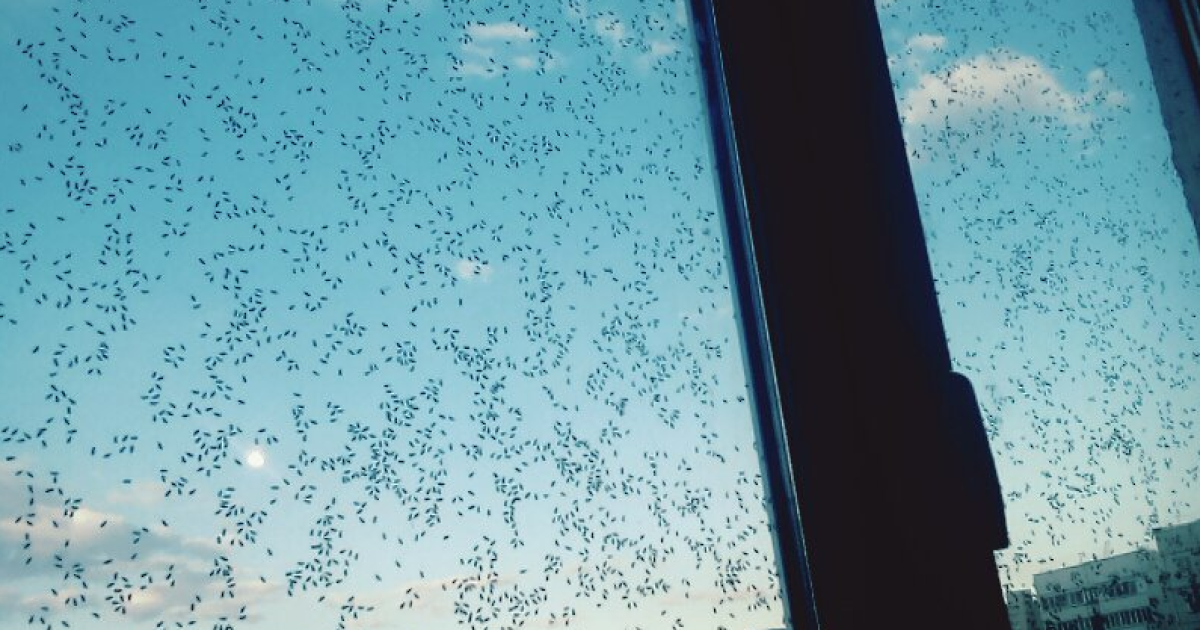The invasion of the insect is experiencing most of the Ukrainian regions, especially in the north of the country. People try not to leave their homes. Milk yield has fallen, and chickens do not rush. The first peak of breeding midges is passing, but there is another one ahead, TSN says.
The invasion of insects throughout Polissya on both sides of the Dnieper. There is a specific landscape: forests combined with marshy lowlands, slow return of moisture. These are the optimal conditions for breeding midges. But so many black clouds - there have not been for decades.
Farmer Hryhoriy Tkachenko lost almost two hundred cows last year, enemy troops organized safaris on his cattle. And this year they were bitten by midges. "The cows gathered in such a bunch, they pressed against each other, the cow could not eat, they only rubbed against each other," he says.
Milk production has fallen by at least 15 percent, Mr. Gregory complains. Because of midges, the cows completely lost their appetite and for the first time had to treat cattle with a repellent, a substance that repels insects. "There were such cases in our area when midges attacked animals and corroded the mucous organs - nose, mouth, eyes, and there was one case when midges scattered the udder of a cow," says Grigory Tkachenko.
His farm is six kilometers from the Desna. This year, the water is as high as ever. The winter flood in the Chernihiv region automatically moved to spring, and after a long cold spring it warmed sharply. All this, scientists say, worked for the mass reproduction of midges.
In gardens without protective masks, there are already few who are digging. The entire bazaar of Chernihiv is hung with protective masks. 10 UAH for just a mesh bag on your head. Protective hats for a hundred and the price for them has almost doubled. The seller says what was once sold alone is now the most popular product.
During the day, rural streets seem to die out, people postpone all work in the morning, when midges who love comfortable temperatures are still asleep. It disappears in the evening, however, mosquitoes "change".
Chickens do not see sunlight at all, sit in cages around the clock and do not want to rush. The midge climbs into the mucous membranes of the bird and chickens can suffocate. A couple of dozen have already been buried in this village.
Not all birds that feed on midges have arrived. This is another explanation from scientists. All because of the cold spring and war. "Many birds, especially these migratory ones, migrate along the Dnieper migration route here and migrate along the Desna, and this is all borderland, when it bombs, everything burns, this is all a factor of anxiety and this is such a limiting factor," assures Yurii Karpenko, Head of the Department of Ecology and Nature Conservation of the National University "Chernihiv Collegium" named after T.G. Shevchenko.
He adds that it is necessary to escape from midges with natural smells, because insects get used to repellents. Vanillin, clove oil, wormwood and tansy are a temporary relief from bites.
Itching and redness are a protective reaction to bites, doctors say. It is advised to apply a cloth moistened with cold water and wash the bite site with soap and water. This year, the number of visits to doctors has increased significantly. "The bite is bigger than usual, scratches more, sometimes there are bubbles with watery contents inside - this is Skeeter's syndrome. This is not an allergic reaction, but a massive reaction to insect venom," explains allergist Mariana Lykova.
Midges live from two to four weeks, after the first wave of breeding, scientists predict the second. Old-timers say midges will leave alone only when elderberry blooms.
Read also:
From the sky you can see how to knock out the enemy: helicopter pilots conducted large-scale exercises
In the resort of Ochakiv, the alarm sounds every hour: the occupiers mined the Kinburg Spit and from there they hit the city every day
The law enforcement father himself pulled his wife and the body of his daughter out of the rubble in the Dnipropetrovsk region: details of the tragedy
